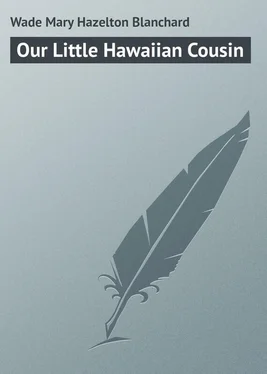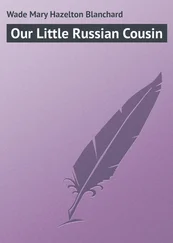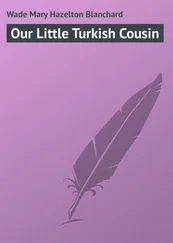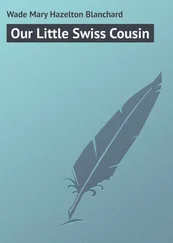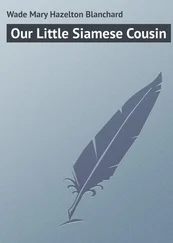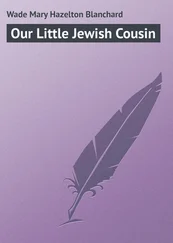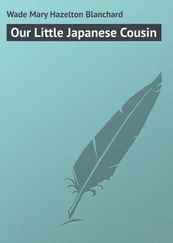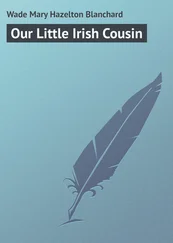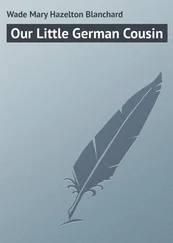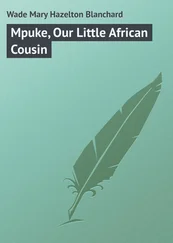Mary Wade - Our Little Hawaiian Cousin
Здесь есть возможность читать онлайн «Mary Wade - Our Little Hawaiian Cousin» — ознакомительный отрывок электронной книги совершенно бесплатно, а после прочтения отрывка купить полную версию. В некоторых случаях можно слушать аудио, скачать через торрент в формате fb2 и присутствует краткое содержание. Жанр: foreign_language, foreign_prose, на английском языке. Описание произведения, (предисловие) а так же отзывы посетителей доступны на портале библиотеки ЛибКат.
- Название:Our Little Hawaiian Cousin
- Автор:
- Жанр:
- Год:неизвестен
- ISBN:нет данных
- Рейтинг книги:4 / 5. Голосов: 1
-
Избранное:Добавить в избранное
- Отзывы:
-
Ваша оценка:
- 80
- 1
- 2
- 3
- 4
- 5
Our Little Hawaiian Cousin: краткое содержание, описание и аннотация
Предлагаем к чтению аннотацию, описание, краткое содержание или предисловие (зависит от того, что написал сам автор книги «Our Little Hawaiian Cousin»). Если вы не нашли необходимую информацию о книге — напишите в комментариях, мы постараемся отыскать её.
Our Little Hawaiian Cousin — читать онлайн ознакомительный отрывок
Ниже представлен текст книги, разбитый по страницам. Система сохранения места последней прочитанной страницы, позволяет с удобством читать онлайн бесплатно книгу «Our Little Hawaiian Cousin», без необходимости каждый раз заново искать на чём Вы остановились. Поставьте закладку, и сможете в любой момент перейти на страницу, на которой закончили чтение.
Интервал:
Закладка:
Mary Hazelton Wade
Our Little Hawaiian Cousin
Far out in the broad island-dotted and island-fringed Pacific Ocean lies an island group known as the Hawaiian or Sandwich Islands.
The brave voyager Captain Cook, who discovered these Hawaiian Islands, found living there a brown-skinned people, whose descendants live there to this day. Indeed, most of the island dwellers in the Pacific are of the brown race, which we know as one of the great divisions of the human family.
As the years passed by, the brown people living on the Hawaiian Islands came into closer relations with America. The islands are on the line of trade and travel between America and Asia. Our missionaries went there, and the people welcomed them gladly.
At length the time came when the Hawaiian Islands asked the greatest of the American nations, our United States, to receive them into her family; for they saw that they could not govern themselves as wisely alone as with her help. Thus these brown, childlike people came to be among the youngest of the adopted children of our nation.
Our government has accepted a great trust in undertaking to care for these people who are of a different race and who live far from our shores. We shall all of us feel much interest in seeing that our adopted brothers and sisters are treated kindly, wisely, and well. We shall not forget that, far apart as they are from us in distance and by race descent, they are yet our kindred. So we shall be doubly glad to meet and know our little Hawaiian cousin.
CHAPTER I.
A HAPPY CHILD
Little Auwae is beautiful; but, better than that, much better, she has no thought of it herself.
She sits in front of her low cottage home singing a soft sweet song, weaving a garland of scarlet flowers to adorn her head. As she carefully places each bud on the string, she looks up at the American flag floating in the breezes not far away.
The schoolmaster of the village tells her it is in honour of George Washington, the greatest man of the United States; that if he had not lived, America would not be what she is to-day, and she might not have been able to give Hawaii the help needed when trouble came.
But what cares little Auwae for all this? What difference does it make to her that her island home, the land of beauty and of flowers, is under American rule? To be sure, a few of the "grown-ups" in the place look sober for a moment when they speak of the change since the old days of Hawaii's kings; but the sadness passes in a moment, and the gentle, happy child-people turn again to their joys and sports.
Auwae has shining brown eyes, and, as she smiles at the homely little dog curled up at her side, one can see two rows of beautiful white teeth. Her skin, although of such a dark brown, is so clear and lustrous one cannot help admiring it. The girl is not afraid of tan or freckles. She rarely wears any head covering save a garland of flowers, if that could be called such; but she bathes herself frequently with cocoanut oil, which makes the skin soft and shiny.
She takes an abundance of exercise in the open air; she swims like the fabled mermaid; she rides for miles at a time over the rough mountain passes on the back of her favourite horse. It is no wonder that this plump little maiden of ten years is the picture of health and grace.
Her home is a perfect bower. It stands in a grove of tall cocoa-palms, whose beauty cannot be imagined by those who live in the temperate lands and who see them growing only in the hothouses. They are tall and stately, yet graceful as the willow; their long, curved stems reach up sixty, seventy, sometimes even one hundred feet toward the sky, then spread out into a magnificent plume of leaves from twelve to twenty feet in length. The breeze makes low, sweet music as it moves gently across the tree-tops and keeps company with Auwae's song.
Beneath the trees the grass is of the most vivid green, mixed with delicate ferns; the garden in front of the house is filled with gorgeous flowering plants, – roses, lilies, oleanders, geraniums, tuberoses, scenting the air with their perfume; besides many others known only in tropical lands.
The garden wall at the side is hidden by masses of the night-blooming cereus, which is such a curiosity in our own country that often many people gather to watch the opening of a single flower.
Vines hanging full of the scarlet passion-flower drape the veranda on which Auwae sits. When she has finished her wreath, she crowns her long hair with it, and turns to go into the house.
She makes a pretty picture, the little girl with her simple white dress, beneath which the bare brown feet are seen, – those feet which have never yet been pressed out of shape by stiff, tight casings of leather.
I call it a house, yet many speak of it as a hut. It is a low building whose sides and high sloping roof are thatched with grasses. Few such are made nowadays in Hawaii, for the people are fast following the example of the white settlers, and now build their cottages of wood, and divide them into rooms, so that they look like the homes commonly found in New England villages.
Auwae's father, however, clings to the old fashions of his people, and his little daughter has always lived in this beautiful grass house. The frame was made of bamboo poles fastened together by ropes of palm-leaf fibres. Days were spent in gathering the grasses for thatching the sides and roof of the house. They were woven into beautiful patterns for the roof. It was necessary to choose skilful workmen who knew just how to finish the corners, for the heavy rains of the tropics must not be given a chance to soak through the outside and make it damp within. When it was finished the house looked like a large bird's nest upside down.
Strange as it may seem, there is no floor in the house, but the ground is paved with stones. It is nearly covered with large mats. Some of these are made with rushes, while others have been woven from leaves of the pandanus-tree. They are stained in bright colours and odd patterns. A large screen of woven pandanus leaves divides the sleeping portion from the rest of the house.
There is no furniture, unless one can call by such a name the great number of mats in the corner. They serve for couches, bedspreads, and screens. In one corner is a collection of gourds and bowls, or calabashes, as they are called. Some of them are polished highly and prettily ornamented. If Auwae's father desired to do so, he could sell these calabashes to the American "curio" collector for a goodly sum of money; but he will not part with a single one. They are of all sizes, from that of a tiny teacup to the great "company" calabash, which holds at least ten gallons.
When there are many visitors at Auwae's home, this calabash is used at meal-time. It will hold enough food to satisfy the appetites of a large party.
The greatest treasure stands at one side near the wall. It looks like a mammoth dust-brush, but it is a sacred thing in this Hawaiian family. It is the mark of chieftainship. None other than a chief had, in the old days, a right to own such a thing, under the penalty of death. The long handle of polished bone is topped by a large plume of peacock feathers. The ancient kings of Hawaii were always attended by bearers carrying "Kahilis," as the people call them, and two enormous plumes stood at the threshold of their homes. No common person could pass by this sign of royalty or chieftainship, and enter a dwelling so marked, unless he were bidden.
CHAPTER II.
AN OUTDOOR KITCHEN
Auwae does not linger within the house, but follows a sound of talking and laughter in the grove behind the house. There she finds her mother and grandmother, together with a number of the neighbouring women. They, too, are weaving garlands, for they wish to decorate their husbands when they come home to dinner.
Читать дальшеИнтервал:
Закладка:
Похожие книги на «Our Little Hawaiian Cousin»
Представляем Вашему вниманию похожие книги на «Our Little Hawaiian Cousin» списком для выбора. Мы отобрали схожую по названию и смыслу литературу в надежде предоставить читателям больше вариантов отыскать новые, интересные, ещё непрочитанные произведения.
Обсуждение, отзывы о книге «Our Little Hawaiian Cousin» и просто собственные мнения читателей. Оставьте ваши комментарии, напишите, что Вы думаете о произведении, его смысле или главных героях. Укажите что конкретно понравилось, а что нет, и почему Вы так считаете.
